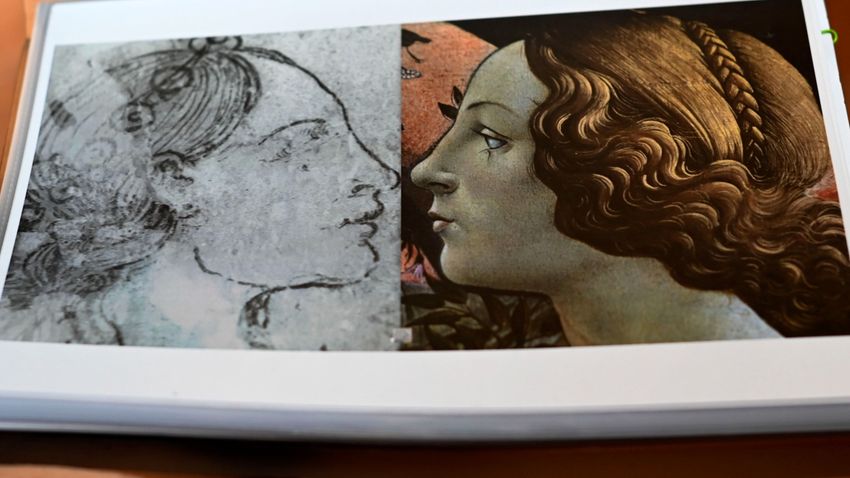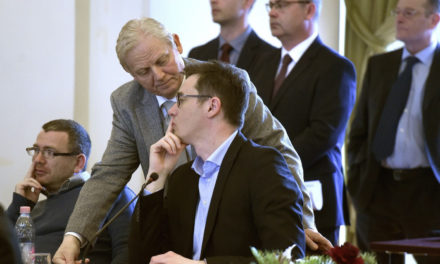Even in their ruins, the murals of the "Hungarian Sistus" present a whole that can be felt in the XV. the splendor of the Kingdom of Hungary in the 19th century.
After a forced five-year break - thanks to the separate support of the Prime Minister's Office last year - the restoration work on the Botticelli frescoes in Esztergom can be completed next year. Munkácsy Award-winning restorer Zsuzsanna Wierdl has been working on the fresco cycle of virtues in the studio room of the Esztergom castle for two decades. The world-class restoration work also revealed that the murals were created by Sandro Botticelli. With the completion of the works, the unique frescoes will soon be available to the general public, reports Magyar Nemzet.
The renovation of the studioloja of the Esztergom castle began more than twenty years ago. Then, the wall-damaging cement layer of the 1930s and the plastic-based paint layers applied in the 1970s had to be removed from the murals. After cleaning the mural, lead restorer Zsuzsa Wierdl came to a unique conclusion:
he found the only surviving Renaissance fresco ensemble outside Italy, the creator of which he assumed to be Sando Botticelli.
After several years of research, the specialists found more and more evidence that the Renaissance master could indeed have created the wall paintings of the studio room of the Esztergom castle.
The Sistine Miracle in Esztergom
The complex of Esztergom castle suffered serious damage during the battles of the subjugation period. III. The royal chapel of Béla and the former residential tower of János Vitéz also collapsed, and the ruins covered the parts of the building below. The studiolo wall paintings owe their existence to this. The frescoes thus went underground for 340 years and, miraculously, their basic painting was preserved. In 1934, during an archaeological excavation led by Tibor Gerevich, he came across the unique building and fresco remains. At the invitation of the then Hungarian government, the renowned restorer Mauro Pellicioli was asked to conserve the wall paintings. The Italian restorer did everything to save the pictures.
Of the original seven figures of the virtues, four figures remain.
However, the researchers are almost certain that seven more figures, the allegories of the seven liberal arts, could also have appeared on the destroyed wall opposite the frescoes, which could also have been painted by Botticelli.
How did Botticelli get to Esztergom?
The marriage of the daughter of the Kingdom of Hungary and the King of Naples was a turning point in the region. The wealth and growing European influence of the Hungarian royal court attracted many Italian craftsmen to the royal cities. King Matthias made his Neapolitan brother-in-law the Archbishop of Esztergom, who, like János Vitéz, advocated the development of humanist education in our country. Archbishop János Aragoniai of Naples had many Italian connections who can also be associated with Botticelli's circle of clients. Thus, it can be assumed that the Italian master came to Esztergom at the invitation of János Aragoniai. The muralists of the time used templates for their paintings, and this was also the case with the studiolo in Esztergom.
The allegorical figures found there match the figures of other Sandro Botticelli paintings.
Among other things, the face of Hóra, which stands out in his painting The Birth of Venus, is completely identical to the image of the figure of Fortitudo (Strength) of the virtues. In addition to many other similarities in style and art history, the engraved monogram of the Renaissance artist was also found during the excavation of the mural. As a result of several international scientific conferences, it seems that more and more experts believe that the castle hill in Esztergom really hides a Botticelli fresco cycle. It is hoped that the wall paintings of the "Hungarian Sistus" will soon become accessible to visitors, which even in their ruins present a whole that can be felt in the 15th century. the splendor of the Kingdom of Hungary in the 19th century.
Photo: Gábor Tóth / Hungarian Nation












